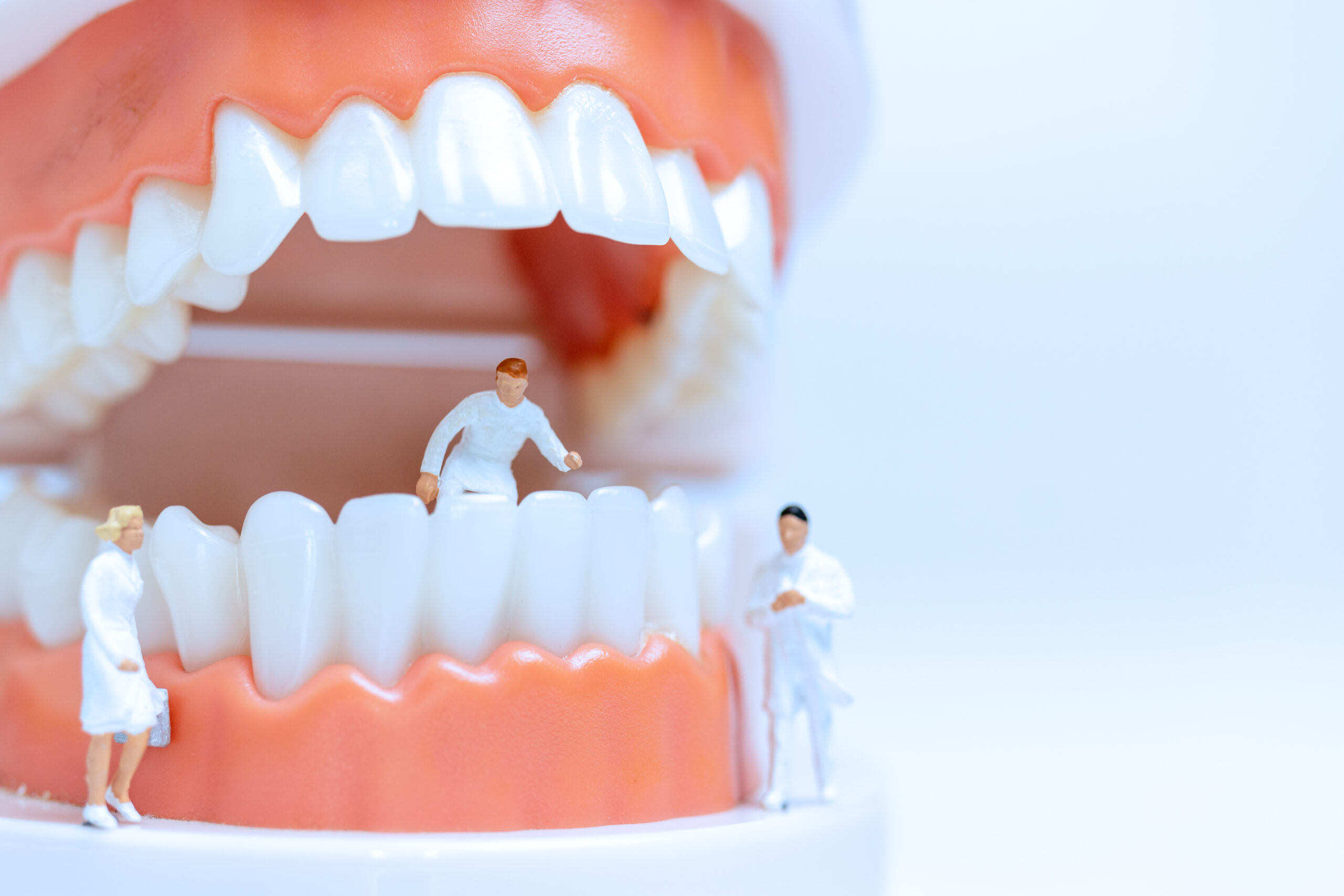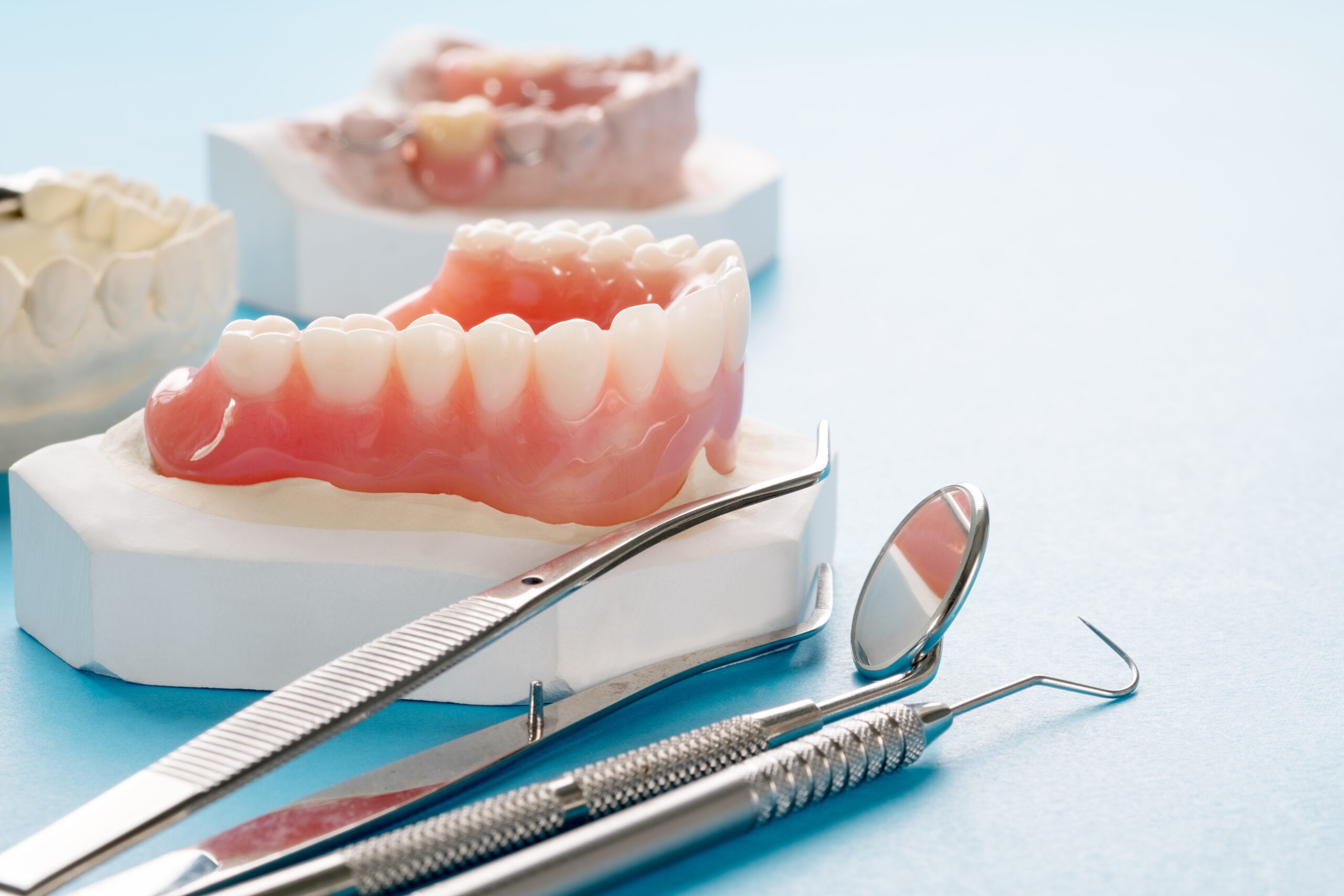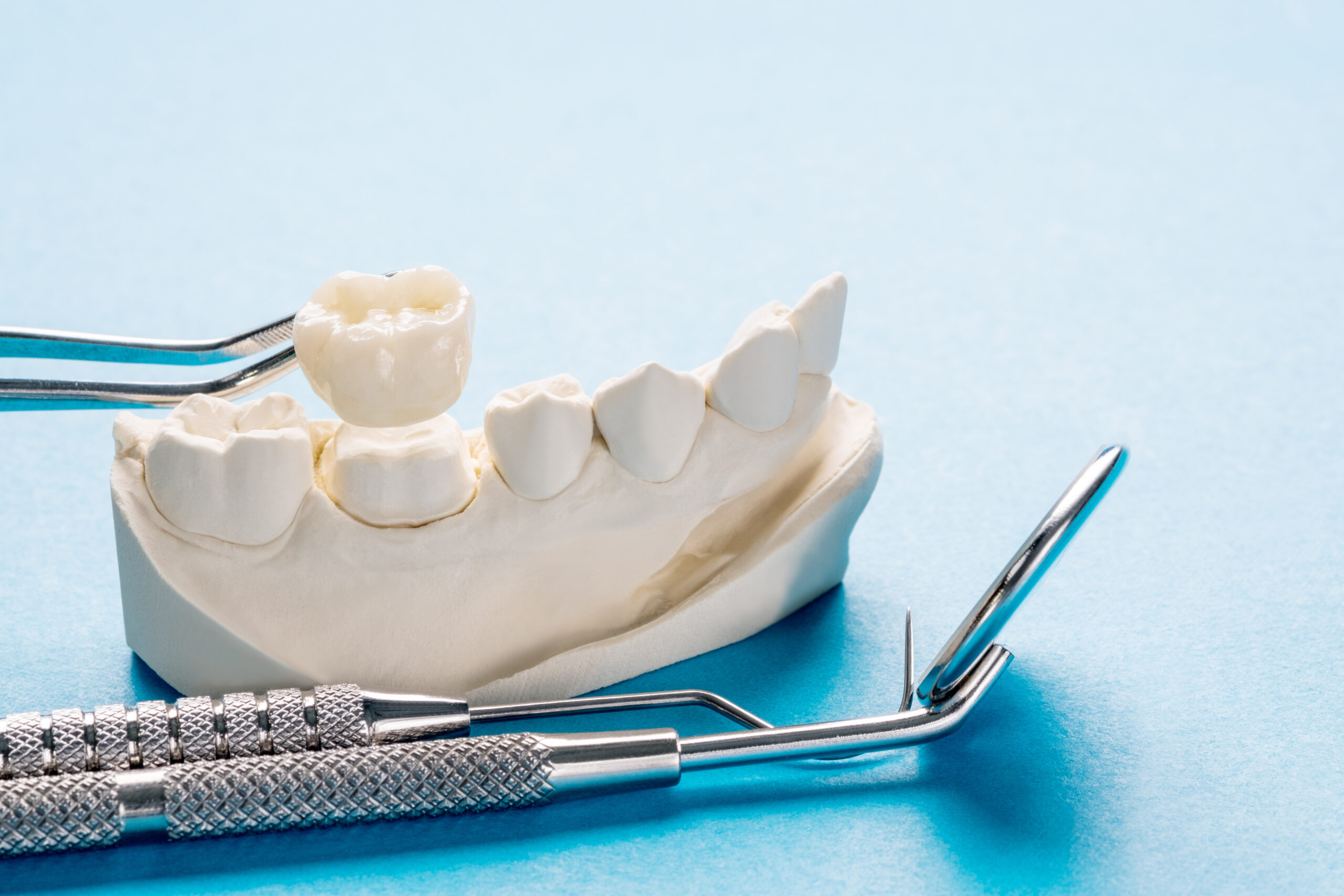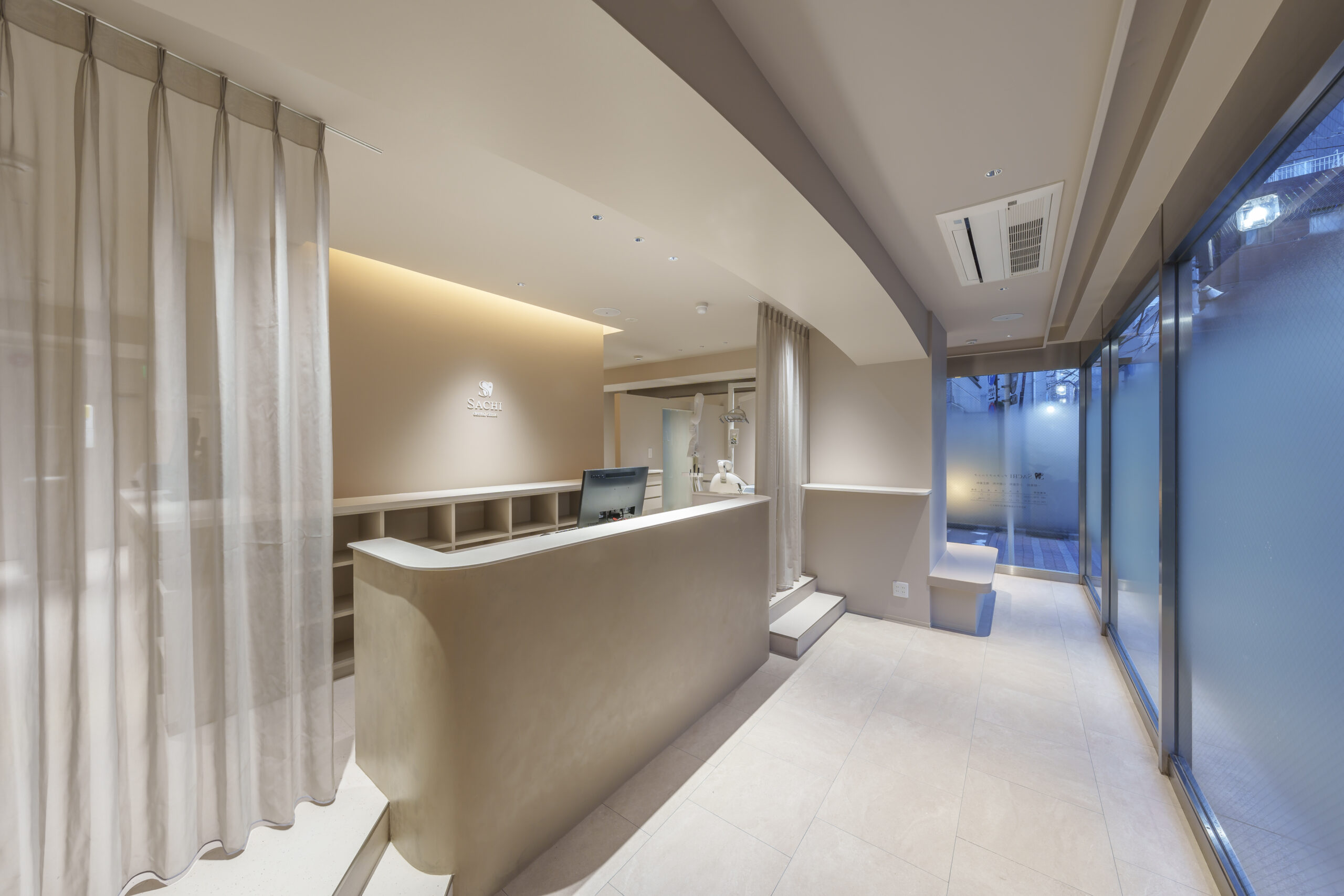Cosmetic Dentistry
Publication Date:
Last Updated:
In recent years, awareness of dental aesthetics has increased, with many people wishing to “whiten their teeth” or “improve their alignment.” At SACHI Dental Clinic, we provide aesthetic dental treatments that excel not only in appearance but also in functionality. We carefully listen to each patient’s desires and concerns to propose the most suitable treatment method.
What is Aesthetic Dentistry?

Aesthetic dentistry is a dental treatment that focuses on the whiteness of teeth, alignment, and the beauty of the mouth. It aims not only to enhance appearance but also to improve functionality such as bite alignment and maintain oral health.
Here are some representative aesthetic dental treatments.
- Ceramic treatment (fillings and crowns)
- Ceramic orthodontics
- Composite resin restoration
- Laminate Veneer
- Whitening
- Teeth cleaning (Airflow, PMTC)
Features of Aesthetic Dentistry at SACHI Dental Clinic

At our clinic, we value the following features to achieve the ideal smile for our patients.
Treatment Tailored to each Patient
The color, shape, and alignment of teeth vary from person to person. At our clinic, we carefully listen to your preferences and propose the best treatment plan, considering the overall balance and appearance of your face.
Attention to Detail Unique to a Female Director
With the meticulous perspective unique to a female director, we achieve a natural and beautiful finish that satisfies both female and male patients.
State-of-the-art Equipment and Technology
Our clinic is equipped with the latest technology, including digital X-rays and intraoral cameras, enabling more precise diagnosis and treatment.
Treatment with Consideration for Pain
In aesthetic dental treatments, we also strive to provide pain-conscious care. We take various measures to reduce patient anxiety, such as using topical anesthesia, electronic anesthetic devices, and creating a relaxing environment.
Commitment to Metal-Free Treatment
Considering the risk of metal allergies, our clinic recommends metal-free treatments that minimize the use of metals. Materials like ceramics are not only aesthetically pleasing but also gentle on the body.
Main Aesthetic Dental Treatment Menu

Ceramic treatment (fillings and crowns)
Ceramic treatment involves restoring teeth with ceramic fillings or crowns after cavity treatment. It can replicate the natural color and translucency of teeth, offering excellent aesthetics. Additionally, it poses no risk of metal allergies and is biocompatible, making it a body-friendly material.
At our clinic, we propose the most suitable ceramic material based on the condition of your teeth and your preferences.
Types of Ceramics
- All-ceramic: Made entirely of ceramic, it offers the highest aesthetics, replicating the translucency and natural color of natural teeth. It is also strong and can be used for both front and back teeth.
- Advantages:
- Extremely high aesthetic quality
- Translucency close to natural teeth
- No risk of metal allergies
- Minimal discoloration due to aging
- Disadvantages:
- More expensive compared to other materials
- May crack under strong impact
- Advantages:
- Zirconia: Known as artificial diamond, it is a ceramic material with very high strength. It is suitable for areas subjected to strong forces, such as molars. Recently, types with translucency have also been developed, allowing use in front teeth.
- Advantages:
- Extremely high strength
- Suitable for bridges in molars
- No risk of metal allergies
- Disadvantages:
- Less translucent compared to all-ceramic
- Being too hard, it may damage opposing teeth.
- Advantages:
In addition to the above, there are various types such as hybrid ceramics (a mixture of ceramic and resin).
Cost: Ceramic treatment is not covered by insurance. Costs vary depending on the material and treatment area, so please consult during counseling for details.
Ceramic orthodontics
Ceramic orthodontics involves reshaping the teeth in the desired alignment by trimming them and fitting ceramic crowns. Unlike wire braces, it does not require long-term appliance wear, allowing for quick improvement of alignment.
- Advantages:
- Quickly improves alignment
- Can simultaneously adjust tooth color and shape
- Less noticeable than wire braces
- Disadvantages:
- Requires trimming of teeth
- Not suitable for those resistant to trimming healthy teeth
- Relatively high cost
Treatment duration: Approximately 1 to 3 months (varies by individual)
Cost: Ceramic orthodontics is not covered by insurance. Costs vary depending on the number of teeth and type of ceramic used, so please consult during counseling for details.
Composite resin restoration
Composite resin restoration involves filling cavities with dental plastic (composite resin). It minimizes the amount of tooth trimming and can replicate the natural color of teeth, making it suitable for treating visible areas like front teeth.
- Advantages:
- Minimal tooth removal
- Often completed in one treatment session
- Can replicate the natural color of teeth
- No risk of metal allergies
- Disadvantages:
- May not be suitable for large cavities
- May discolor over time
- Less strong compared to ceramics
Cost: Composite resin restoration may be partially covered by insurance. Please confirm during counseling for details.
Laminate Veneer
Laminate veneers involve lightly trimming the tooth surface and attaching a thin ceramic shell. It is suitable for significantly changing tooth color or shape and correcting minor misalignments. It is effective for enhancing the aesthetics of front teeth.
- Advantages:
- Minimal tooth removal
- Can significantly change tooth color and shape
- Treatment is completed in a short period
- Disadvantages:
- Requires trimming of healthy teeth
- May crack or detach
- Relatively high cost
Cost: Laminate veneers are not covered by insurance. Costs vary depending on the number of teeth and type of ceramic used, so please consult during counseling for details.
Whitening
Whitening is a treatment that uses special agents to whiten teeth. It can whiten yellowed teeth due to aging, food and drink, or genetics without trimming.
For more details, please see the whitening page.
Treatment Process

At SACHI Dental Clinic, aesthetic dental treatments are performed according to the following process.
- Counseling: First, we carefully listen to the patient’s concerns and preferences. We consider what kind of teeth you want and which treatment methods are suitable together.
- Examination: We conduct detailed examinations of your mouth, including X-rays, intraoral photography, and dental impressions. CT scans may also be performed if necessary.
- Treatment plan formulation: Based on the examination results, we formulate the optimal treatment plan for the patient and explain it clearly. We also provide detailed information about the treatment duration and costs at this stage.
- Treatment: Once you are satisfied with the treatment plan, we begin treatment. Our clinic is committed to pain-conscious treatment, so rest assured.
- Maintenance: Post-treatment, regular maintenance is crucial. We propose the best maintenance plan tailored to the patient’s oral condition.
Frequently Asked Questions (FAQ)

- How long does ceramic treatment last?
- The lifespan of ceramic treatment varies depending on the material used, the patient’s oral condition, and maintenance status, but it is generally said to last over 10 years. However, care is needed as it may crack or chip if subjected to strong impact.
- Is ceramic treatment painful?
- Anesthesia is used during treatment, so there is little pain. There may be temporary pain or sensitivity after treatment, but it usually subsides within a few days.
- How long does the effect of whitening last?
- The duration of whitening effects varies by individual, but it generally lasts about six months. To prolong the effects, regular maintenance and avoiding strongly pigmented foods and drinks are necessary.
- Which should be done first, orthodontic treatment or aesthetic dental treatment?
- It depends on the alignment of the teeth and the patient’s preferences, but generally, better results are often achieved by aligning the teeth with orthodontic treatment first, followed by aesthetic dental treatment. Please consult during counseling for details.
- I have a metal allergy, what treatment options are available?
- Our clinic focuses on metal-free treatments and can offer treatments that do not use metal, such as ceramics and composite resin. Patients with metal allergies can receive treatment with peace of mind.
View Other Treatment Options
Treatment Menu
Types of Ceramic Treatments and how to Choose
Treatment Menu
Bite Alignment Treatment
Treatment Menu
Wisdom Teeth
Treatment Menu
Pediatric Dentistry
Treatment Menu
Orthodontics Invisalign
Treatment Menu
Dental Check-ups and Preventive Dentistry
Treatment Menu
Root Canal Treatment
Treatment Menu
Periodontal Disease Treatment
Treatment Menu
Whitening

